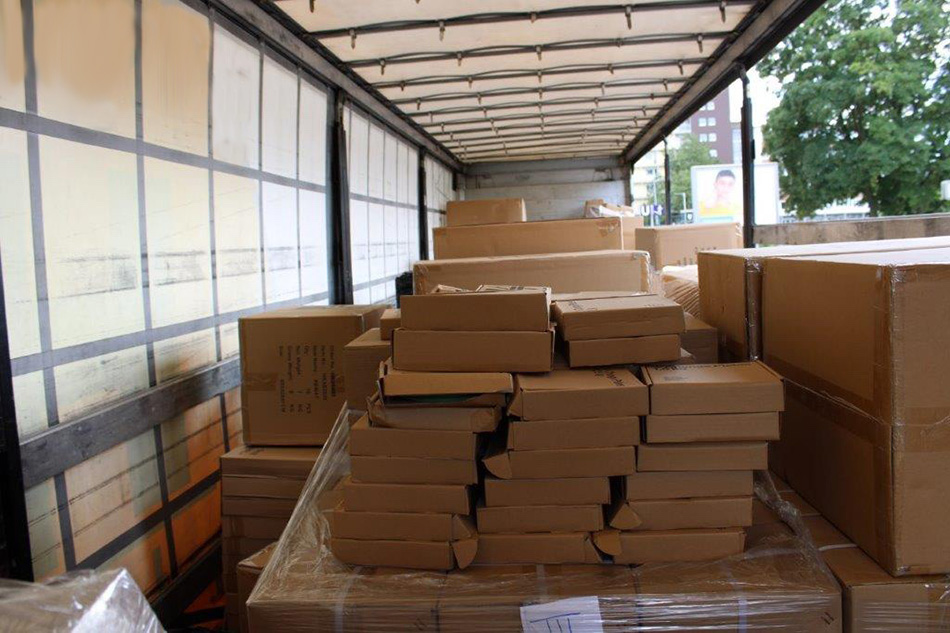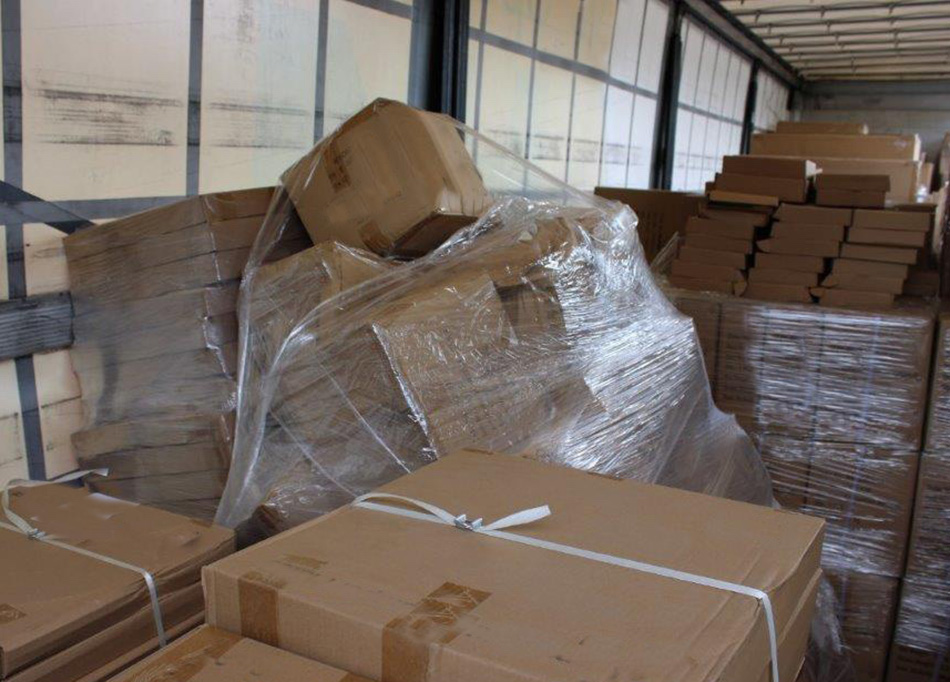| Photo of the month – November 2025 |
[German version] |
Dangerously shifting load – Transporting a fitness studio
Situation:
A bulge in the tarpaulin on the left-hand side of the vehicle made one truck look particularly conspicuous during an inspection. A brief glance was enough to suggest that the load had moved inside the vehicle. It should be noted that a shifting load can also have a negative effect on the distribution of the load between the wheels.

Figure 1 – [Bulging tarpaulin – © Dirk Drepper]
This suspicion was soon confirmed:
The goods being transported, consisting of weights, dumbbells and other fitness accessories, had come loose and were moving around unrestrained. Fortunately, everything stayed in the vehicle, because even in the best-case scenario, a dumbbell on the carriageway would have led to a risky evasive maneuver. In, the worst case, it could have had very serious consequences.

Figure 2 – [Loose dumbbell – © Dirk Drepper]
Observations:
An examination of the loading surface revealed a number of serious load securing shortcomings:
- Carton goods, in some cases combined to form load units, were not secured in the vehicle.
- A number of the stretch film wrappings were torn, with the result that some packages had slid and, in some cases, were lying around like loose bulk goods.
- Some of the cartons were damaged, resulting in a number of dumbbells lying unsecured on other boxes.
- One of the load units had slipped and the resulting lateral force had caused it to make the bulge in the tarpaulin on the left.
- The load securing equipment, such as anti-slip mats, filling material, cargo planks or lashing belts, was inadequate or simply missing.

Figure 3 – [Loose carton goods – © Dirk Drepper]
Here, we can clearly see that load units had not been formed in accordance with DIN 55415 and that they were also not suitable for being loaded as a tight fit.

Figure 4 – [Tipped load units – © Dirk Drepper]
Measures:
The vehicle had only been traveling for a few hundred meters.
It was guided back to the pick-up point at walking speed in the company of the police.
- The truck was completely unloaded.
- Damaged load units were repackaged in a way safe for transportation.
- Defective side boards were replaced.
- The vehicle was loaded step by step and under supervision.
- By stowing and positioning the various items correctly, it was possible to create a tight fit not only in the direction of travel but also to the side and opposite the direction of travel.
- Gaps between the load units were filled with empty pallets to ensure the load formed a tight fit.
Thanks to these measures, the driver was able to go ahead and transport the load safely.
Consequences:
- The transport operation was delayed
- Reloading the vehicle involved considerable manual effort
- The driver and loader were reported for inadequate load securing in accordance with §22 of the German Road Traffic Regulations
Conclusion:
This case shows how inadequate load securing can result in dangerous situations even after just a few meters Transportation could only continue after correct, professional loading, with suitable filling materials being used and, most importantly, appropriate load units being formed.
When it comes to loads such as this, compliance with the prerequisites set out in DIN EN 12642 Code XL is essential with regard to safety, liability and accident prevention.
Back to beginning
